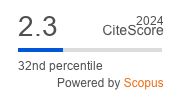THERMAL SCIENCE
International Scientific Journal
Authors of this Paper
External Links
SIMULATION RESEARCH ON THE GRID CONNECTED GENERATION SYSTEM OF SOLAR THERMAL POWER GENERATION
ABSTRACT
Objective: To improve the efficiency and stability of the solar thermal power generation system, and promote the optimization and development of solar thermal power generation grid connection. Methods: The working principle of the heat exchanger in the heat storage system is analyzed. Combined with the technological requirements of the system, the mathematical model of the heat exchanger is established by the mechanism modelling method. According to the inherent characteristics and control requirements of the heat storage system, the control schemes are proposed. The control strategies of different control algorithms, such as single-loop control, Smith predictive compensation control, cascade-Smith control, and feedforward-cascade-Smith control, are designed and adopted. The simulation model is established to obtain step response waveforms of different control systems. The advantages and disadvantages of different control strategies are comprehensively analyzed and compared. Results: After introducing the superheated steam mass-flow disturbance, the error of the single-loop control system increases. After adjusting the system to restore the oscillation state, the system error is high (10.24%). Smith predictive compensation control system fluctuates, with a peak time of 548 seconds
KEYWORDS
PAPER SUBMITTED: 2019-11-25
PAPER REVISED: 2020-01-09
PAPER ACCEPTED: 2020-01-25
PUBLISHED ONLINE: 2020-03-15
DOI REFERENCE: https://doi.org/10.2298/TSCI191125115L
CITATION EXPORT: view in browser or download as text file
2025 Society of Thermal Engineers of Serbia. Published by the Vinča Institute of Nuclear Sciences, National Institute of the Republic of Serbia, Belgrade, Serbia. This article is an open access article distributed under the terms and conditions of the Creative Commons Attribution-NonCommercial-NoDerivs 4.0 International licence

